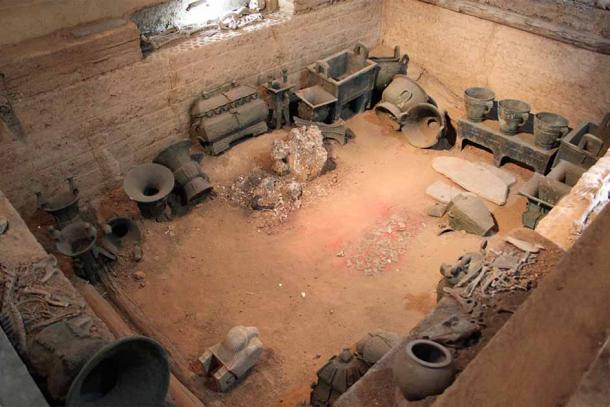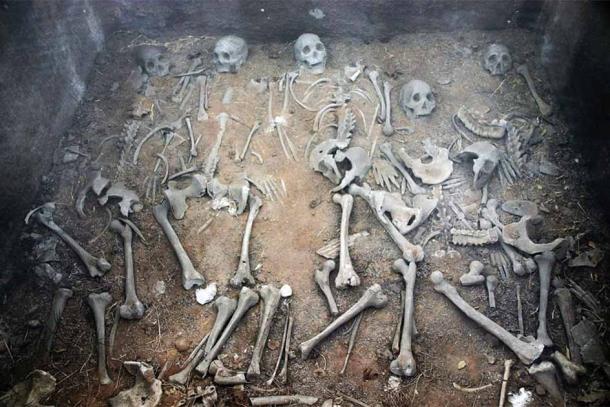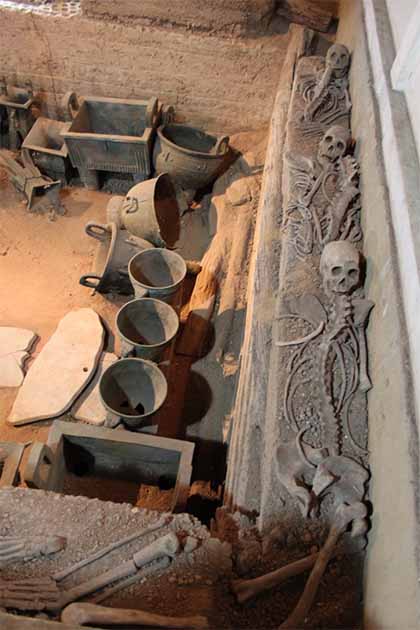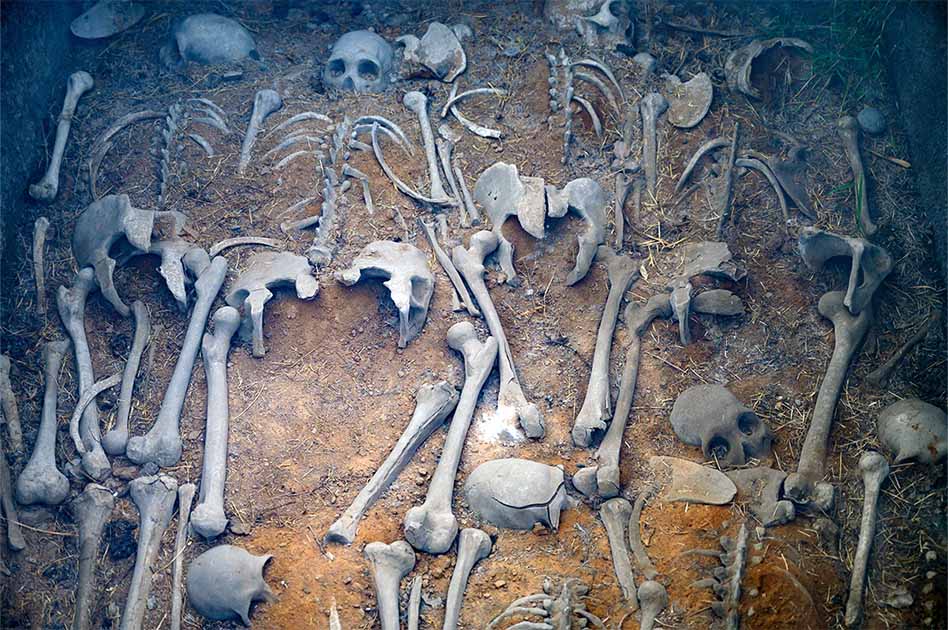We have one clear example followed by a blank page. Then it was all about the royal family or something like that. Otherwise the practise is scant at best.
We know the past saw slavery practised everywhere, not least because your labor was the only currency. That was never going to work out.
We of course, do not know what really happened here. Perhaps successors simply chose to clean the slate. No need for religion or custom even and away we go.
More imortant though is that this society coincides exactly with the global Atlantean Bronze culture , which produced a stable culture until its abrupt global collapse in 1159 BC. Once the copper stopped moving as money, their colonies unwound. .
Sinister Secret of the Shang Dynasty: Its Penchant for Human Sacrifice
UPDATED 11 APRIL, 2023 - 18:17 ALEKSA VUČKOVIĆ
https://www.ancient-origins.net/history-ancient-traditions/shang-dynasty-sacrifice-0018237?u
There is no denying the far-reaching and unique history of ancient China. Thousands of years before our time, the ancient dynasties and cultures of China excelled in a variety of arts and technologies, pioneering skills that would later come to shape the world as we know it. From exceptional jade objects, to massive bronze ritual vessels and sprawling funeral complexes - the ancient Chinese did everything with incredible skill and attention to detail. But those early, powerful dynasties - namely the Shang Dynasty - were also known for one disquieting practice: human sacrifice . What do we know of this grim ancient tradition?

Reconstructed Shang Dynasty tomb of Lady Fu Hao. ( Public domain )
Shang Dynasty Royals Were Laid to Rest with Sacrificed Slaves
The Shang Dynasty was a Chinese royal dynasty that reigned from circa 1600 BC until 1045 BC, in the Yellow River Valley. It was a powerful and enduring Dynasty, marking an important period in the history of ancient China. It is also considered the earliest Dynasty of Chinese history that can be documented and supported by archeological evidence.
Over the years, the excavations of Shang sites have yielded a plethora of fascinating items, ranging from exquisite royal jade objects, bronze vessels and many intriguing burials. It is perhaps the first period of Chinese history that has crossed over from the tales of ancient legends to the realms of reality.
Renji were captives and slaves, mainly male, and treated in a similar way to animal sacrifices. pic.twitter.com/DDabZEJeX3
— Xianyang City Bureaucrat (@XianyangCB) March 1, 2023
During these excavation, archaeologists made an unexpected discovery which led them to the realization that the history of the era was far more sinister than they could have ever imagined. Archaeologists were struck by the discovery of human sacrifice in Shang royal tombs, where carefully placed skeletons of slain slaves indicated this dark practice. Nevertheless, by the time of the succeeding Zhou Dynasty human sacrifice seems to have disappeared completely.
One of the foremost discoveries related to human sacrifice in China is the Tomb of Fu Hao. One of the many wives of King Wu Ding, Fu Hao was a powerful priestess and general. Hers was just one of the many royal tombs situated in the ancient city of Yinxu, one of the late capitals of the Shang Dynasty .
Within the lavish necropole, researchers found a wealth of precious items of all kinds, numbering in the thousands. But what intrigued them the most were animal and human remains included within the Shang Dynasty tomb. It seems that Lady Fu Hao was not buried alone.

Shang sacrificial burial pit in Yinxu. (Public domain)
Delving into the Identities of Those Subjected to Ritual Human Sacrifice
Archaeologists discovered a small pit below the corpse of Fu Hao while excavating the site. Within it were buried six dogs that were sacrificial killed. The likely reason they were there was to protect their mistress in the afterlife. But this was not the most gruesome find. Off to the side, excavations yielded the remains of 16 people, all of whom were sacrificed and buried with care. The Shang Dynasty kept some very dark secrets.
The grim tomb of Fu Hao was not an isolated case. Over the years, the Shang capital of Yinxu was thoroughly excavated, revealing a sprawling burial field where the royals were laid to rest. Many of their tombs had sacrificed human remains within them. What is more, the field is littered with over 2,500 sacrificial pits.
The invocation and pleasing of the ancient Gods was clearly important for the Shang. This is further confirmed by many cowry shells and animal bones that were found. These were used by oracles as a form of divination tool. Many have inscriptions on them that directly ask whether or not humans and animals should be sacrificed.
Yinxu, the final capital of the Shang, is considered to be the human sacrifice hotspot for that era. Researchers believe that during the final 200 years of the Shang period, over 13,000 humans were sacrificed within Yinxu.
Of these, the vast majority were males, aged 15 to 35. Upon further investigation, it was discovered that human sacrifices were conducted en masse, with anywhere from 15 to 50 individuals being killed simultaneously. The largest known human sacrifice event encountered involved at least 339 people.

Skeletal remains from the tomb of Fu Hao provided evidence of human sacrifice. ( Public domain )
A Grim Period of China’s Ancient History
Thanks to advanced modern technology, archeologists have been able to study the remains of sacrificed humans during the Shang Dynasty in great detail. One significant finding was that the majority of sacrificial victims had resided in Yinxu for several years prior to their deaths, suggesting that they may have been slaves. This aligns with the historical context of the Shang Dynasty, which frequently engaged in warfare with neighboring enemies.
Research shows that most of these people were not of Shang provenance, and would likely be seen as outsiders at the time. Cranial remains indicate great similarity with modern Chinese people, based on comparable remains from Taiwan and Hainan.
Thanks to archaeological finds, it became abundantly clear that the Shang Dynasty not only tolerated but also practiced slavery, often using their own servants as sacrificial offerings through cruel and brutal methods. The ancient Chinese placed great importance on the afterlife and ensured that their royals were buried with all the luxuries they had enjoyed in life, which unfortunately included the use of their slaves.

No comments:
Post a Comment